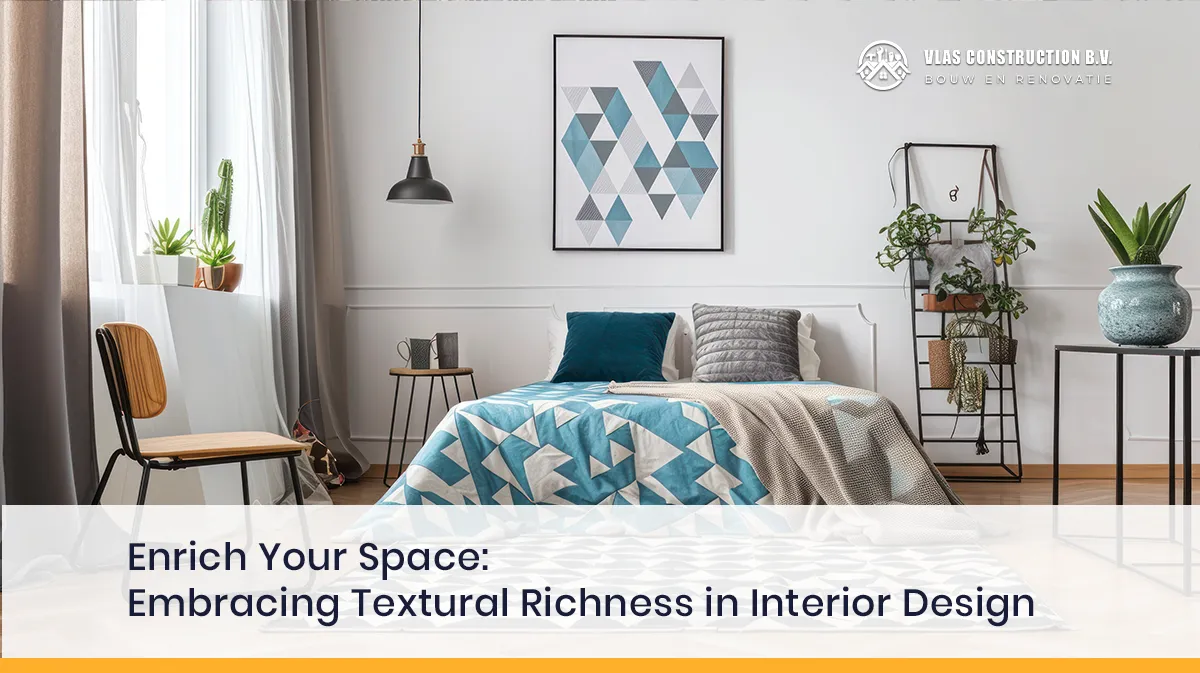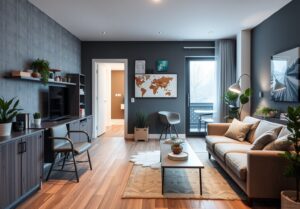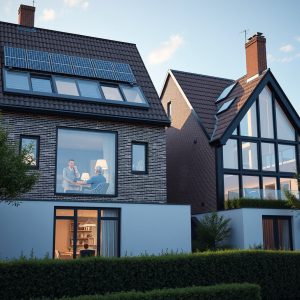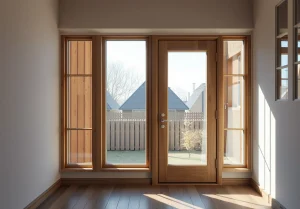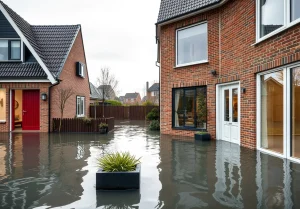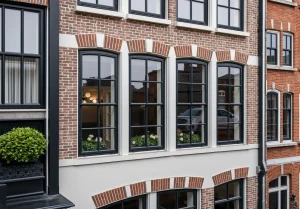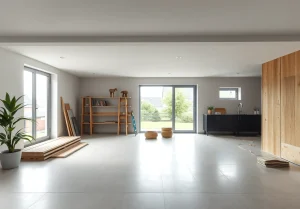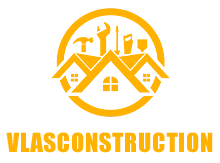Introduction to Textural Richness in Interior Design
In the realm of interior design, textural richness is more than a mere trend; it is a fundamental element that infuses depth, contrast, and personality into every space. Texture refers to the surface quality of materials, whether perceived by touch or sight. From the plush softness of a shaggy rug to the sleek coolness of marble countertops, textures play a pivotal role in the overall ambiance of a home. They add dimension to flat surfaces, create focal points, and, most importantly, enhance the sensory experience of the inhabitants.
Incorporating various textures into living spaces is not merely about aesthetic appeal; it is a strategic approach to design that can elevate a room from ordinary to extraordinary. This practice brings a sense of luxury and comfort, making homes feel more inviting and lived-in. As we delve deeper into the world of interior design, we begin to understand that texture can influence the mood and atmosphere of a room just as significantly as color and light.
This section of our exploration into textural richness aims to unravel the layers of this design element, shedding light on its importance in modern interiors. As we embark on this tactile journey, remember that the interplay of textures can transform a house into a warm, welcoming home, reflecting the personalities and tastes of those who reside within.
Understanding Different Types of Textures
When we think of textures, we often consider the tactile experience—how something feels under our fingertips. However, in interior design, texture also pertains to the visual impression materials convey within a space. In the Netherlands, where design intertwines with functionality and comfort, understanding and employing different types of textures is crucial. From the rustic charm of aged wood reminiscent of Dutch farmhouses to the smooth, modernist finishes seen in urban Amsterdam apartments, textures are diverse and multifaceted.
In Dutch homes, soft textures are commonly used to create a sense of warmth and coziness, especially during the colder months. Think of thick woolen throws, plush velvet cushions, or fluffy area rugs that invite bare feet. These soft textures are complemented by harder ones, such as unpolished wood floors, stone countertops, or wrought iron fixtures, reflecting the Netherlands’ rich history and natural resources.
The interplay of glossy and matte finishes also holds significance in Dutch interior design. A high-gloss lacquered table can stand out beautifully against a matte-painted wall, creating a dynamic and visually interesting space. By mixing these different textures, Dutch homes achieve a balanced and harmonious environment that appeals to both sight and touch.
Techniques for Incorporating Textures
Incorporating textures into your home, particularly with a nod to Dutch design principles, involves a mix of tradition and innovation. Start by blending natural materials that the Netherlands is known for—like wood, stone, and metals—with contemporary textiles and accents. This approach not only honors the country’s heritage but also brings a timeless elegance to the space.
One key technique is layering. Begin with a solid foundation, such as hardwood floors typical in Dutch interiors, and add layers through area rugs, throw blankets, and draperies. This not only enhances the room’s texture but also its warmth and comfort, a prized aspect in Dutch living spaces.
Balance is essential when mixing textures. Combine heavy, rough materials like reclaimed wood with lighter, smoother fabrics like linen or silk. This contrast creates depth and interest without overwhelming the senses. Lighting, an often-underestimated element, plays a crucial role here. The soft glow of lamps can highlight the intricate details of textured surfaces, enhancing the overall ambiance of the room.
Trending Textural Elements in Home Renovation in the Netherlands
In the Netherlands, the trend in home renovation leans towards sustainability and nature-inspired elements, reflecting the country’s commitment to environmental consciousness. Natural materials such as bamboo, cork, and recycled wood are not only eco-friendly but also add unique textures to the interior.
Artisanal crafts are making a resurgence, with Dutch designers embracing locally sourced materials and traditional techniques. Handmade tiles, woven baskets, and ceramic vases introduce a personal, tactile touch to homes, connecting inhabitants with the artisan’s handiwork.
Sustainable textiles, such as organic cotton and hemp, are increasingly popular in Dutch homes, offering both comfort and a clear conscience. These materials, paired with traditional Dutch motifs or modern designs, contribute to a home’s textural diversity while aligning with the country’s green initiatives.
Practical Tips for Integrating Textures in Your Home
Integrating textures into your home requires a thoughtful approach, especially when aiming to create a space that reflects the harmonious balance often found in Dutch interiors. Here’s how you can achieve this:
Living Room: Begin with a neutral base, such as a soft, light-colored sofa, which acts as a canvas for textured throw pillows and blankets. Incorporate natural wood elements through furniture or decorative items to bring warmth and a touch of the Netherlands’ love for nature. A woven rug can add depth and comfort underfoot, while sheer curtains allow natural light to enhance the textures within the room.
Bedroom: Comfort is key in this personal sanctuary. Layer your bed with a variety of fabrics like a down comforter, a chunky knit throw, and multiple pillows with different cases (silk, linen, velvet) to create an inviting and cozy retreat. Textured wallpaper or a wooden headboard can add visual interest and a rustic, Dutch touch.
Kitchen: Utilize materials such as terracotta tiles or stone countertops to add texture while retaining functionality. Open shelving made of natural wood can display ceramic dishes and glass jars, adding layers of texture and providing convenient access to everyday items. Incorporate a mix of metals through hardware and fixtures for a modern, eclectic feel.
Bathroom: Incorporate textures through elements like plush towels, a wooden bath mat, or stone sink basins. Wall tiles with varying patterns or finishes can add depth to the space without overwhelming it. Natural light and greenery can also enhance the textural elements, bringing a piece of the Dutch outdoors inside.
Benefits of Textural Richness in Living Spaces
Embracing textural richness in your home has numerous benefits. Psychologically, it can make spaces feel more grounded and inviting, creating an environment where relaxation and comfort are prioritized. Textures can also define zones within an open-plan space, subtly separating areas without the need for walls or barriers.
Physically, varying textures can stimulate the senses, making your home a more dynamic and interesting place to live. The interplay of different materials can also influence the room’s acoustics, warmth, and overall feel, enhancing the living experience.
From a design perspective, integrating different textures adds depth and dimension to interiors, preventing rooms from feeling flat or monotonous. It allows for personal expression and can reflect the cultural heritage of the Netherlands, with its emphasis on simplicity, functionality, and connection to nature.
Conclusion and Call to Action
Incorporating rich textures into your home’s interior design can transform ordinary spaces into luxurious and comfortable sanctuaries. It’s a trend that not only adds aesthetic value but also enhances the quality of living. By embracing the Dutch approach of balancing tradition with modernity, you can create a home that is both timeless and contemporary.
As we conclude this exploration of textural richness, remember that your home is a reflection of your personal style and values. Don’t be afraid to experiment with different textures and materials to find the perfect blend for your space. And if you’re ready to infuse your home with the beauty and warmth of rich textures, Vlas Construction is here to help. Our team of experts can guide you through the renovation process, ensuring that your living space becomes the epitome of comfort and luxury.
Ready to transform your home with the magic of textures? Contact Vlas Construction today, and let us help you bring your vision to life.

